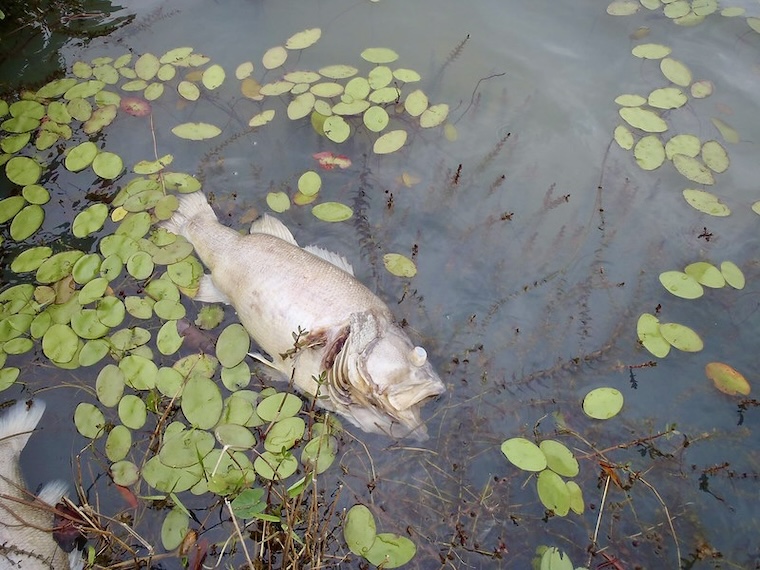Climate & Sustainability
Loss of oxygen in lakes and oceans another sign of Earth systems under strain
New essay co-authored by UC Santa Cruz researcher says aquatic deoxygenation is intertwined with climate change and other ‘planetary boundary’ processes

In 2009, the journal Nature featured the article, “A safe operating space for humanity,” in which scientists described nine global-scale processes that regulate the overall habitability and stability of the planet. These “planetary boundaries” include processes such as climate change, land-use change, and biodiversity loss.
A researcher at UC Santa Cruz now says we’re missing one: the rapid loss of dissolved oxygen in our natural bodies of water due to humans – a worldwide phenomenon known as “deoxygenation.” In a perspective piece published today in Nature Ecology and Evolution, postdoctoral research fellow Erica Ferrer and her co-authors show how deoxygenation of the world’s marine and freshwater ecosystems represents an additional planetary boundary that is critical to the integrity of Earth’s ecological and social systems.
They explain how aquatic deoxygenation is among these interconnected processes, where the movement of one planetary boundary can alter the likelihood of crossing others. Hence, they call for an expansion of the planetary-boundaries framework in order to improve concerted global monitoring, research, and policy efforts to address the challenges brought on by rapid deoxygenation.
“Recognizing aquatic deoxygenation as a 10th planetary boundary within the already-existing framework represents an important step in drawing peoples’ attention and management resources towards this important global-change issue,” said Ferrer, a Chancellor’s Postdoctoral Research Fellow in UC Santa Cruz’s Department of Ecology and Evolutionary Biology.
Dissolved-oxygen concentrations have rapidly and substantially declined in recent decades across all aquatic ecosystems: from streams and rivers, lakes, reservoirs and ponds, to estuaries, coasts, and oceans. Since 1980, lakes and reservoirs have experienced oxygen losses over 5% and 18%, respectively. Since 1960, oceans have experienced oxygen losses of around 2%. And although that number is smaller, it represents a more geographically and volumetrically extensive mass of water, considering that the ocean covers more than 70% of Earth’s surface.
Marine ecosystems have also experienced substantial variability in oxygen depletion. For example, in the deep waters off of Central California, dissolved oxygen content has declined by as much as 40% in the last few decades. “Aquatic deoxygenation is closely linked to changes in climate and land use,” said study lead author Kevin Rose, an associate professor in the departments of biology and civil and environmental engineering at Rensselaer Polytechnic Institute. “It is caused by decreases in the solubility of oxygen in water resulting from increasing temperatures, reduced deep-water ventilation due to stronger and longer stratification, and increases in oxygen-consuming respiration linked to both elevated temperature and enhanced inputs of nutrients and organic matter.”
He added that global warming and pollutants are disrupting biogeochemical processes in aquatic ecosystems, adversely affecting both freshwater and marine species. Individual organisms often experience reduced sensory abilities, growth, body size, and reproduction. Low oxygen can also lead to widespread death and ecological impairment. Aquatic habitats with low oxygen levels are commonly referred to as “dead zones” because of their loss of life, which threatens ecosystem services like fishing, aquaculture, tourism, and cultural practices.
Ferrer works in UC Santa Cruz’s Coastal Sustainability Lab, headed by Kristy Kroeker, professor of ecology and evolutionary biology. As part of Ferrer’s larger focus on fisheries and fishery organisms under climate change, her work includes ties to the issues of ocean warming and deoxygenation. These processes can induce aquatic ecosystems to transition to alternative and undesirable states—characterized by, for example, harmful algal blooms and widespread low oxygen.
“In general, oxygen declines in the marine environment – or any environment, for that matter – make it harder for animals to survive and thrive,” she said. “Thus, deoxygenation threatens to impact, and potentially restructure, entire marine food webs and ecosystems, including those off our coastline that we depend on and hold dear.”
Rose, Ferrer and a few of their collaborators developed this paper over the last several years. It was preceded by research and writing that Ferrer completed last fall at UC San Diego’s Scripps Institution of Oceanography, and she is currently working on a follow-up article about how to monitor global deoxygenation and its progress towards notable oxygen boundaries and thresholds worldwide.
The paper’s other co-authors include Lisa Levin of UC San Diego, Stephen Carpenter of the University of Wisconsin, Sean Crowe of the University of British Columbia, Sarah Donelan of the University of Massachusetts Dartmouth, Véronique C. Garçon of Laboratoire d’Etudes en Géophysique et Océanographie Spatiales and Institut de Physique du Globe, Marilaure Grégoire of the University of Liège, Stephen F. Jane of Cornell University and University of Notre Dame, Peter Leavitt of the University of Regina, Andreas Oschlies of the GEOMAR Helmholtz-Centre for Ocean Research, and Denise Breitburg of the Smithsonian Environmental Research Center.